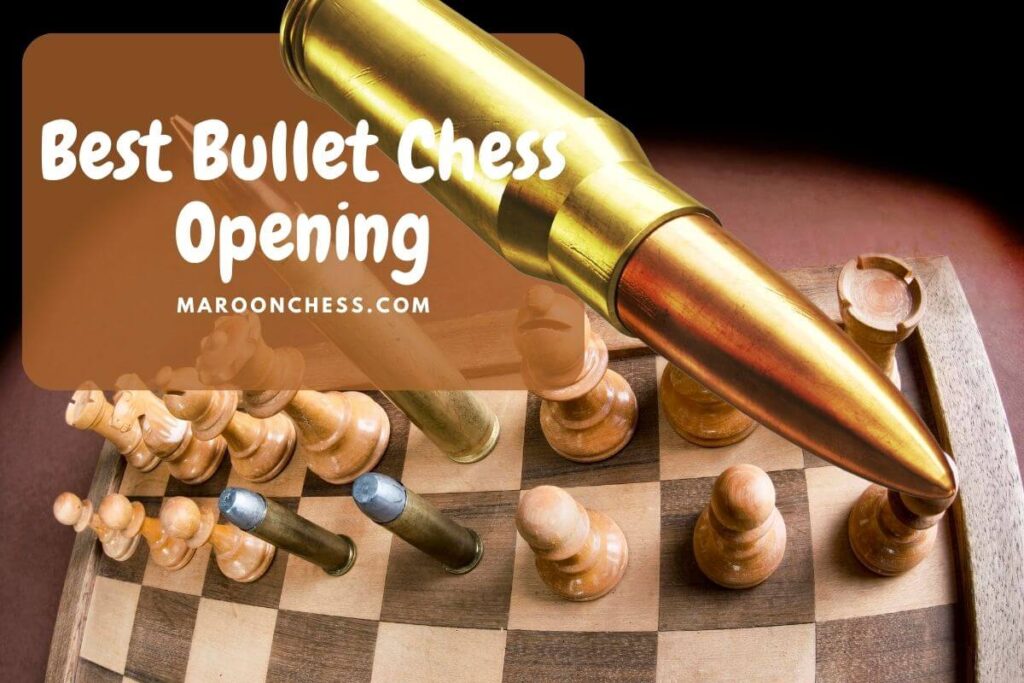Bullet chess are games that are played with less than 3 minutes on the clock. The time format for bullet chess is typically 1|0 minute or 2|1 (two minutes plus 1 second increment).
According to GM Hikaru Nakamura who is arguably the best bullet player in the world, almost any chess opening works in bullet games as long as you can blitz out the first 10-15 moves.
There is a misunderstanding that opening theory is necessary to play bullet chess well, but this is far from the truth. In fact, knowing too much opening theory might get you into a habit of playing too quickly, which can lead to you missing tactics.
While it’s good to play sound and positional openings in bullet, you should also play openings that offer tactical suprises and tricks in the position. After all, that’s what bullet is all about!
This article covers 6 of the best openings for bullet chess that may give you a winning advantage straight from the opening. These openings feature traps that are successful even at the highest level. With that said, let’s jump right in!
Here are the 6 best bullet chess openings:
- Accelerated London System (2…h5)
- Englund Gambit
- Budapest Gambit (Queen Trap)
- St. George Defence (Bc4 variation)
- Alapin-like Sicilian
- Dutch Defense (h3 variation)
1. Accelerated London System (2…h5)

The Accelerated london system is a very solid opening choice for white and is not easy for black to crack. White puts his bishop on f4, the pawn moves to e3, the f1 knight comes out to f3, his b1 knight goes to d2, and white solidifies the center with pawn to c3. Black usually develops in classical fashion in response. However, for the purpose of bullet chess, one of the best moves after 2.Bf4 is to play pawn to h5.
This move 2…h5 sets a trap in the position for white. If white continues in his usual style of playing pawn to e3, then black would win white’s bishop after the moves 2.e3 e5!

Notice that white’s bishop cannot escape after 3.Bxe5 f6 4.Bg3 h5 5.Bf4 g5 (If 3.dxe5 black plays g5 trapping the bishop)
Black is winning as early as move 6.

Looking at the database of chess games, this trap is very successful even against players rated over 2400. A lot of players seem to fall for this trick even in classical games with longer time controls. They just don’t seem to notice the incoming threat to the bishop on f4. All in all, if you are looking for a tricky line against the London, then this bullet opening is worth your try!
2. Englund Gambit
The so called Englund Gambit is a rare opening choice in classical chess but it contains sharp and tactical lines that are ideal for bullet games. This opening can really throw your opponent off guard, as black sacrifices a pawn on move one with the idea of gaining quick development for his pieces.
Englund Gambit

It’s openings like these that tend to make your opponent think for a long time. And, if you can get him to burn time on his clock, then you’ll be at an advantage.
White’s most common response to 1…e5 is 2.dxe5 capturing the pawn. The next step for black is to bring out the f8 bishop to c5. After 3.Nf3 d6 4.exd6, we reach the position below:
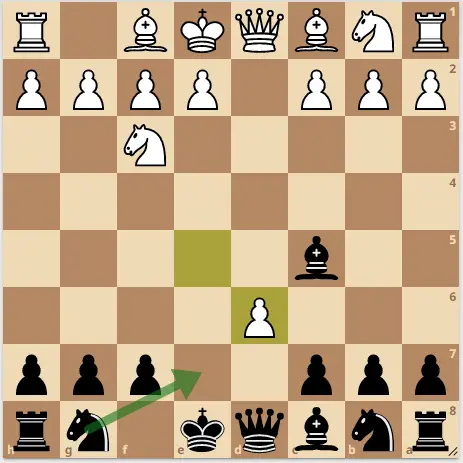
The move that is recommended here is actually knight to e7. At first glance, it appears that black has given up a knight, but with closer inspection, white falls into the trap if he’s gullible.
Indeed, if white goes ahead and capture the knight on e7 with his pawn, black has a tactical blow Bxf2+.

This move deflects the king away from the protection of the queen on d1. The white king is forced to capture the bishop on f2. And after, kxf2, black picks up the white queen on d1.
As you can see, the move knight e7 is a dubious, yet tricky move that is sometimes premoved in bullet chess to make it look like you blundered a piece. Numerous players fall for this trap according to lichess database and chessbase database of games.
The Englund gambit is definitely a lethal weapon to add to your arsenal of bullet openings.
3. Budapest Gambit (Queen Trap)
The opening moves are 1.d4 Nf6 2.c4 e5
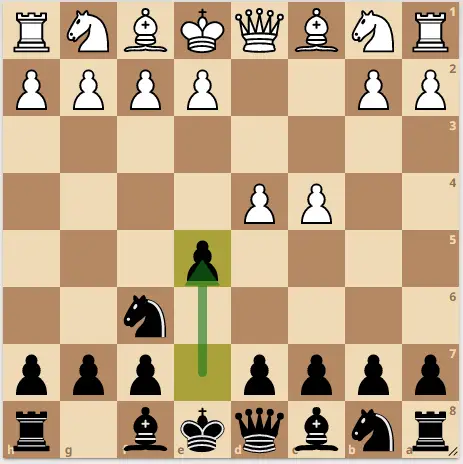
The budapest gambit is an energetic opening, thereby making it perfect for bullet chess. It resembles the Englund Gambit where white sacrifices his e5 pawn. The same theme is present in both openings. That is, black wants to create tactical problems for white by offering a gambit.
After 3.dxe5, black can respond with 3…Ng4, but for bullet chess, we recommend the move 3…Ne4. After 4.Nf3 we reach the following position:
Fajarowicz variation

In this variation, black makes no effort to reclaim the pawn on e4 unlike 3…Ng4. His idea is to go for piece activity instead of material, which can lead to sharp and tactical lines in favor of black.
4…b6 5.Qd5
The move b6 is what we recommend in this position which may seem like a blunder as the white queen can step in onto the d5 square, forking the knight and rook.
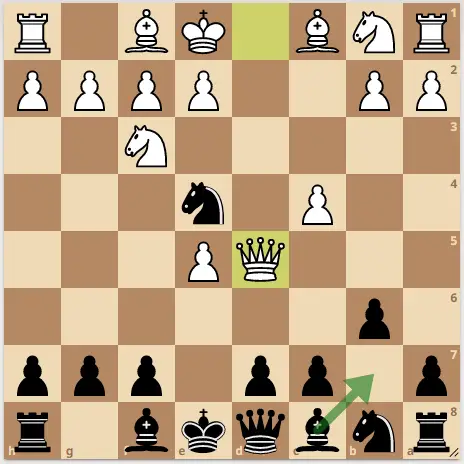
Black can go ahead and play the move bishop to b7 which seems like another crazy blunder. but not to worry, black has this completely thought out. Black is slowly luring white into a trap as you’ll see later.
After 5…Bb7 6.Qxb7 Nc6 the white queen is having a difficult time escaping the web of black’s pieces. But can the queen safely escape? The best move for white here is to play the computer move 7.Nd4 which most people will not find and leads to a complicated game. The natural looking escape move 7.Qa6 is actually the most played, but this runs into a queen trap as black prepared.
Queen to a6 is a blunder which traps the white queen
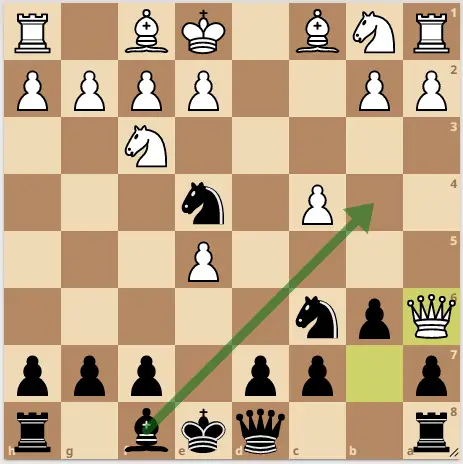
The white queen is trapped because after 7…Bb4+ 8.Bd2 Nc5 the white queen is under attack and is left without no safe squares to retreat. The last attempt is 9.Qb5 but 9…Bxd2+ 10.Nbxd2 a6 and the white queen has no way to escape black’s net.

Another trap in the budapest gambit opening is to play the the move d6 instead of the move pawn to b6.
4…b6

Play usually continues 5.exd6 Bxd6. If white now plays the natural looking move 6.g3 trying to fianchettoe the light squared bishop, black can deliver a tactical blow with the move 6…Nxf2 forking the rook and queen. If the black king captures on f2, the bishop will capture the g3 pawn with check, revealing a discovery on the white queen on d1.

As you can see, both 4…b6 and 4…d6 contains sharp and tactical lines in favor of black. You can alternate between these moves if your opponent already knows one of the traps. For example, he may have falled for the b6 trap and learned from that game. Therefore, you could introduce the new d6 move as a way to surprise him.
Best Bullet Opening With The White Pieces
So far we’ve looked at bullet openings with the black pieces. Now let’s discuss some of the best bullet openings you can play as white.
4. St. George Defence (Bc4 variation)
The St.George Defense for black begins with the not so serious move 1.e4 a6.
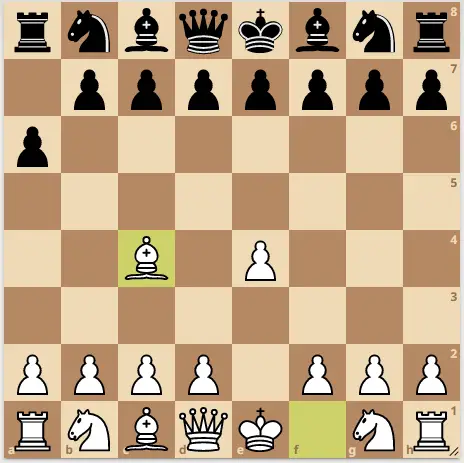
It’s clear that black wants to expand on the queenside with the move pawn to b5. Here, we recommend playing the move 2.Bc4 which appears to lose a tempo after 2…b5. However, black will fall for tactics if he expands on the queenside with pawn b5. If 2…b5 white has the nasty sacrifice 3.Bxf7+

3…Kxf7 4.Qh5+ g6 5.Qd5+ forks the rook and king. White would win the exchange for the sacrificed bishop.
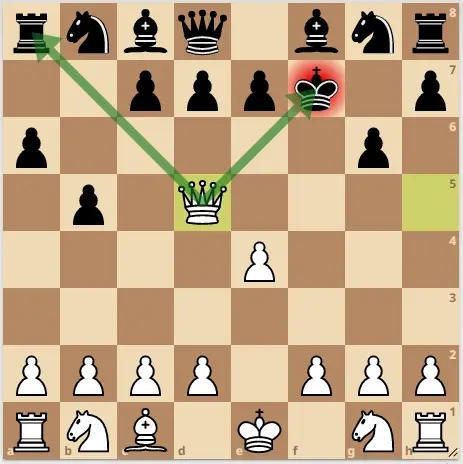
The theme that you should learn from this opening is that Bc4 often leads to tactics against the f7 pawn that shelters and protects the king. Sacrificing this bishop on f7 drags the enemy king out and that can lead to all sorts of threats against the opposing king.
5. Alapin-like Sicilian
The Alapin is an opening played by white against the Sicilian Defense where white incorporates the move pawn to c3 to support an expansion in the center. The following position shows a transposition into the Alapin Opening.
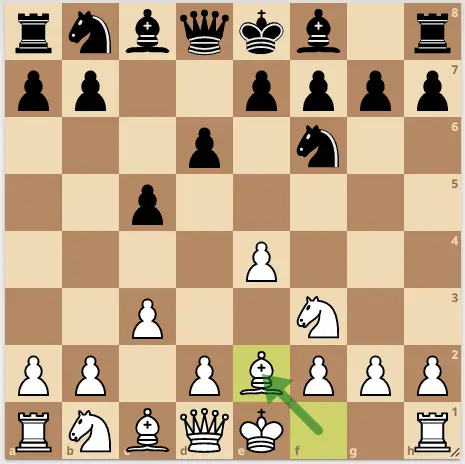
This position is reached after the move 1.e4 c5 2.Nf3 d6 3.c3 Nf6 4.Be2
White calmly plays the moves Bishop to e2 which appears to have overlooked the pawn on e4. The black knight can capture this pawn on e4. But, this leads to a fork. White plays 5.Qa4 check forking the king and the knight on e4. After black defends the check, white will recapture the knight on e4 winning a minor piece as early as move 6!

6. Dutch Defense (h3 variation)
Here comes the last chess opening for bullet. It features the Dutch Defense which arise after the move 1.d4 f5 2.h3 Nf6. White responds with pawn to h3 with the intention of shattering black’s kingside with the move pawn g4.

After 3.g4 fxg4 4.hxg4 Nxg4 5.Qd3 Nf6, white has a devastating blow 6.Rxh7 which wins at most a full rook. White cannot recapture with the f6 knight or the h8 rook since the white queen will move in to deliver checkmate on g6.
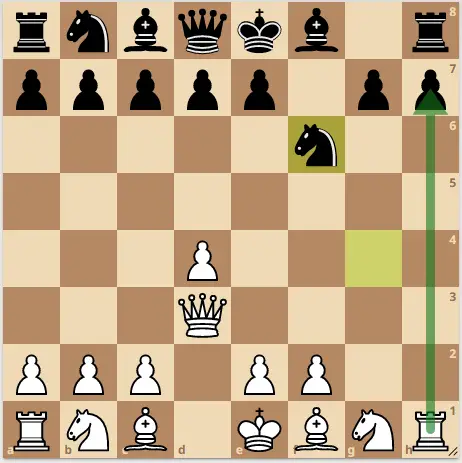
Final Thoughts
Bullet is a completely different ball game than classical chess. Perfect play and strategy is not required in bullet unlike longer time control formats where there is adequate time to think.
If you can trick your opponent as early in the opening, then you have a good chance of winning the game. Being down a pawn or 2 in the middlegame doesn’t really count in bullet. All in all, it’s all about your tactical awareness and how quickly you can play over the board.

